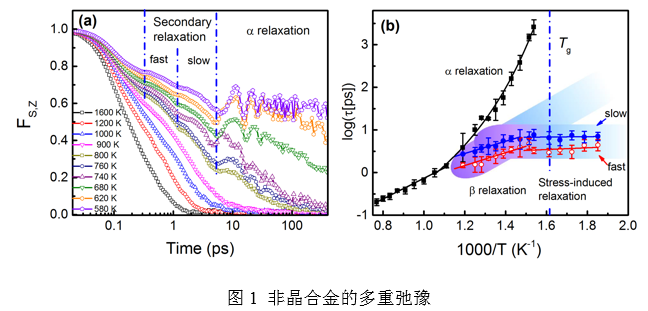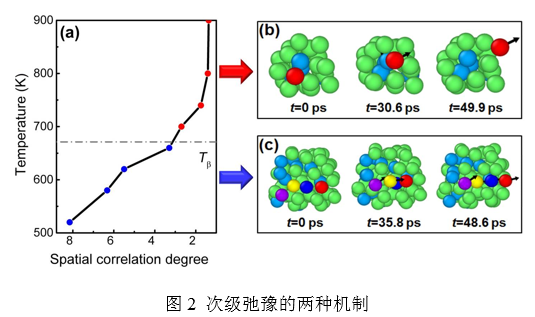BIT made significant progress in relaxation kinetics of amorphous alloys
¡¡¡¡Translator: News Agency of BIT Li Siyu
¡¡¡¡Editor: News Agency of BIT
¡¡¡¡Recently, great progress has been made in the study on relaxation kinetics of amorphous alloys by the research group of associate professor Lv Yongjun of Beijing Institute of Technology(BIT) (group members are associate professor Lv Yongjun and doctoral candidate Bi Qingling), together with Wang Suohua and others of Institute of Physics in Chinese Academy of Sciences. The study first revealed the micro-mechanism of the secondary relaxation in two-dimensional amorphous alloys thin-film materials and predicted the existence of fast and slow sub-models in secondary relaxation. The research result was published in recent Physical Review Letters [Phys. Rev. Lett. 120, 155501 (2018)] and the work was funded and supported by National Science Foundation.
¡¡¡¡Amorphous substance is a complex multi-body interactive system whose micro structure is in long-range disorder and energy at semi-stable state for a long time. Amorphous alloys (also called metallic glass) are a new type of non-crystalline material discovered around 50 years ago, which enormously enriches the study of physics of metals and becomes at the cutting edge of condensed matter physics research. Amorphous alloys are endowed with many distinctive physical and chemical characteristics and mass amorphous alloys particularly have excellent mechanical property such as super high intensity and fracture toughness as well as low elastic modulus and so on. Therefore, mass amorphous alloys have been regarded as the strongest, hardest and toughest metallic structural material so far. Although a large number of researches have been done in the field of amorphous alloys in recent years, the understanding of some basic problems remains unclear, for instance, the physical essence of amorphous transition and the physical origin of the outstanding mechanical property of amorphous alloys. The present studies show that all these questions are related to the complicated multiple relaxation consisting in amorphous alloys. There is the phenomenon of multi-kinetics during the formation of amorphous alloys where the long-time structure relaxation and short-time secondary relaxation co-exist and the behavioral representation and micro-mechanism of secondary relaxation are key issues in present study.
¡¡¡¡
¡¡¡¡
¡¡¡¡Chart 1 Multiple Relaxation of Amorphous Alloys
¡¡¡¡
¡¡¡¡
¡¡¡¡Chart 2 Two Mechanisms of Secondary Relaxation
¡¡¡¡
¡¡¡¡In their research, they used the method of molecular dynamics to study the relaxation kinetic behavior of amorphous alloy CuZr. Correlation function illustrates that in the supercooled liquid state close to amorphous transition, relaxation actually consists of two processes, namely slow relaxation and fast relaxation. This multiple relaxation behavior has continued to amorphous state. The simulated result further presents that relaxation has a kinetic transition around the transition temperature of amorphous state. Further analysis on single-particle dynamics points out that the relaxation before transition is mainly random and thermal activated single-particle jump whereas that after transition is primarily collaborative jump with high relevance, and the latter has inner link with the non-equality stress distribution, offering a clear relaxation physical image of amorphous alloys.

